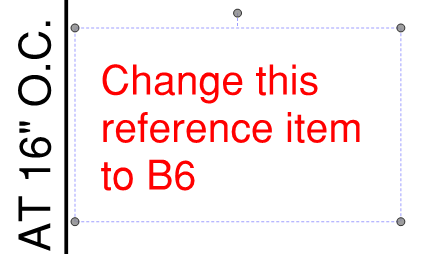The most commonly used operations are accessible through a context menu which appears whenever the markup is right-clicked. The menu differs depending on the type of markup, whether multiple markups are selected, and whether the PDF has one or multiple pages.
The most common context menu items are:
 Cut (CTRL+X): Cuts the selected markup and places it on the clipboard.
Cut (CTRL+X): Cuts the selected markup and places it on the clipboard.
 Copy (CTRL+C): Copies information from a markup or the content onto the clipboard while leaving it in place.
Copy (CTRL+C): Copies information from a markup or the content onto the clipboard while leaving it in place.
 Paste (CTRL+V): Pastes a markup from the clipboard onto the PDF.
Paste (CTRL+V): Pastes a markup from the clipboard onto the PDF.
 Paste in Place (CTRL+SHIFT+V): Pastes content in the exact position that it was cut or copied from.
Paste in Place (CTRL+SHIFT+V): Pastes content in the exact position that it was cut or copied from.
 Delete (DEL): Deletes the selected markup.
Delete (DEL): Deletes the selected markup.
Open Pop-Up Note: Opens a comment box that is functionally similar to the Note Tool for entering information about the selected markup.
Control Point: Enables adding and editing control points for adding curved parameters to annotations to applicable markups.
Convert to Arc: Converts a line segment to an Arc to applicable markups.
Layer: Associates the markup with a layer, allowing easy toggling of visibility.
Order: Arranges overlapping markups from back to front.
Alignment: Provides options for aligning multiple markups.
Edit Action: Determines what happens when a user clicks the markup.
Flatten: Flattens the selected markup or markups.
Group: Converts two or more markups into a single markup element.
Ungroup: Breaks up a group into its individual markup elements.
Lock (CTRL+SHIFT+L): Protects the annotation from editing. The control points for the annotation change to gray, indicating that the annotation is in a locked state. To unlock, select the annotation and select Lock again to toggle the lock state off.
Reply: Reveals the Markups list (if hidden) and allows you to post a response to the annotation. See the Markups list section for more information.
Set Status: Sets the status of the markup. The Status is visible in the Markups list.
Check: Applies a checkmark to the markup in the Markups list, often indicating that the annotation has been incorporated back into the CAD drawing or that the source document has been updated based on the comment.
Add to Tool Chest: Adds the selected annotation to Tool Chest for easy reuse of the markup. Hover over the menu item to show the currently enabled tool sets in a submenu. Click a tool set to place the annotation in that set.
Set As Default: Uses the current properties settings for all new annotations of this type going forward. For example, if a free text annotation is selected, all of the settings such as font color, line color for the surrounding text box and the fill color will all default to the current settings on the currently selected annotation and will continue to do so until they are changed again.
Apply to All Pages: Places the same annotation on each page of the current PDF. The same properties are applied to all the pages.
Apply to Selected Pages: When multiple pages are selected in the Thumbnails tab, Apply to All Pages becomes Apply to Selected Pages. Places the same annotation on each page that is selected in the Thumbnails tab.
Properties: Reveals the Properties tab and indicates the current settings for the selected annotation on the tab.
Change Colors: Opens the Change Multiple Colors tool, allowing for selective color changing when multiple markups are selected.
Autosize Text Box: Reduces the size of a text box so that it fits around the text, but is no larger.
Select Sequence: Selects all members of a Sequence.
Resume Count: Resumes adding the selected Count measurement to the PDF.
Resume Sequence: Resumes placing the selected Sequence markup to the PDF.


